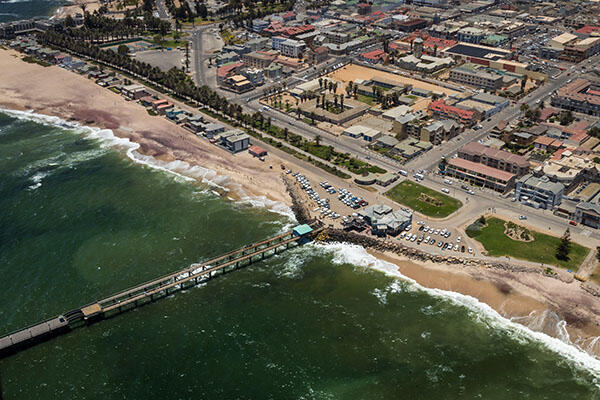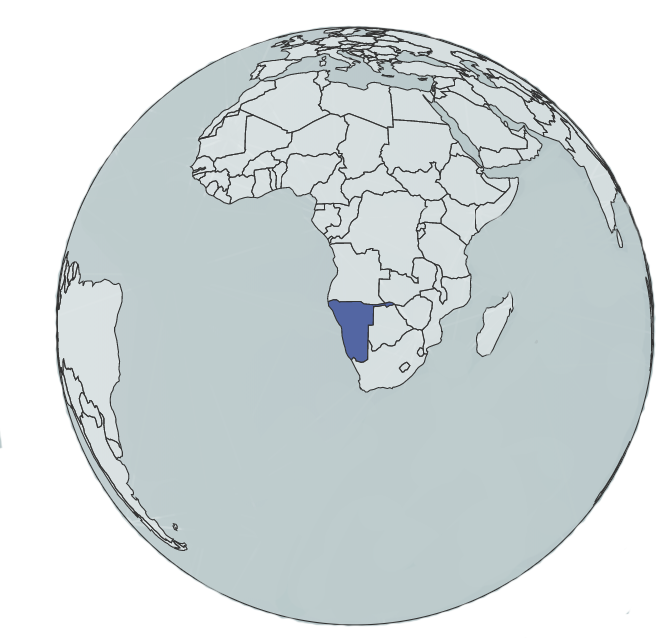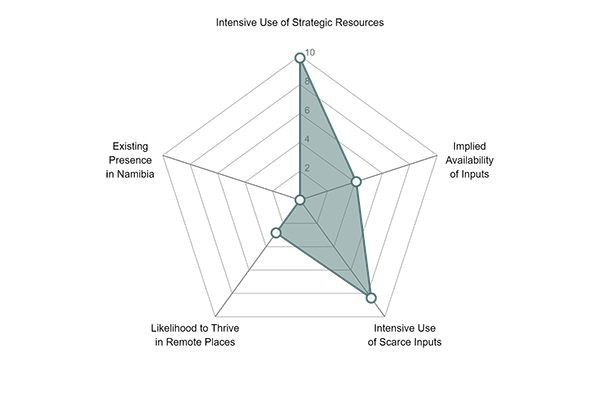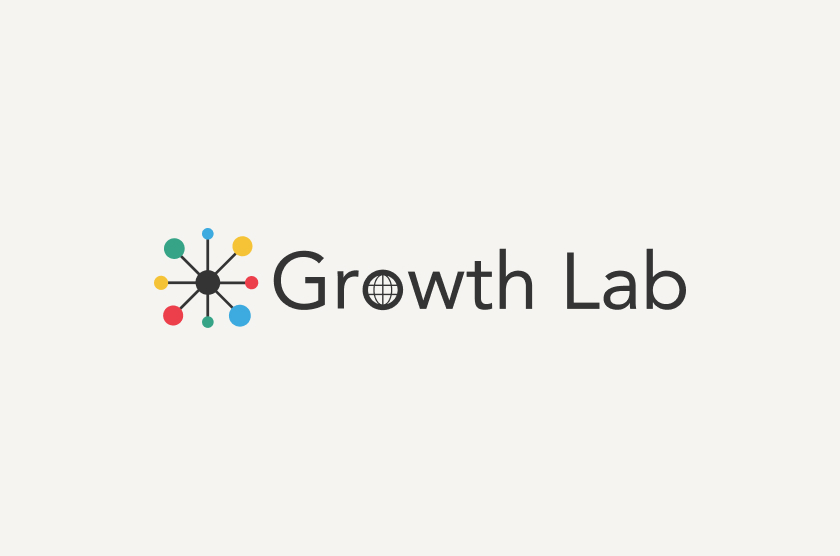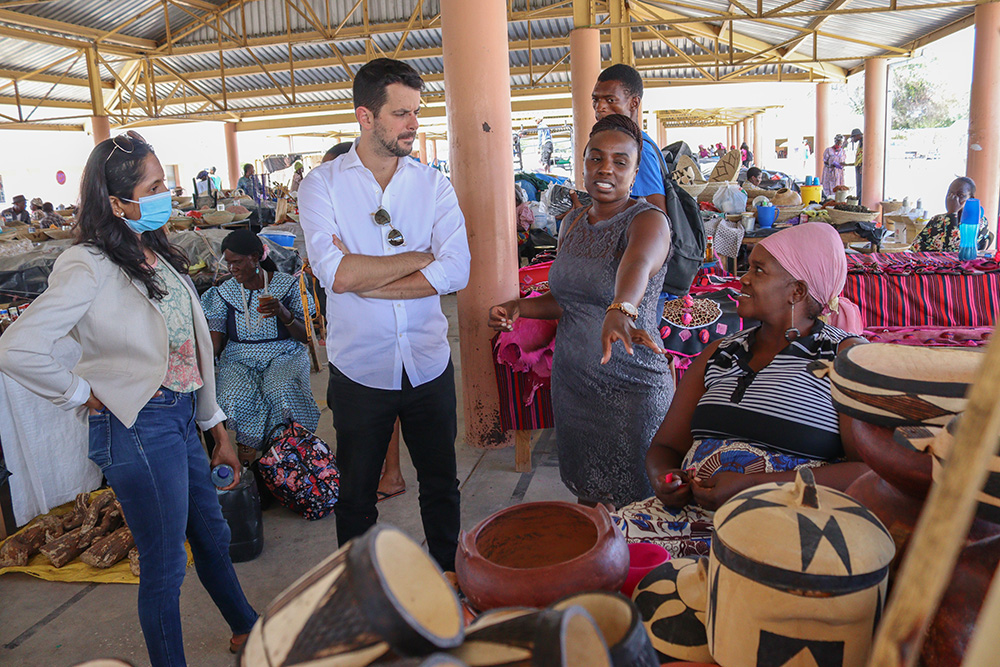Working Papers
Hausmann, R., et al., 2022
In the thirty years that have passed since independence, Namibia has been characterized by its over-reliance on its mineral resource wealth, procyclicality of macroeconomic policy, and large income disparities. After […]
In the thirty years that have passed since independence, Namibia has been characterized by its over-reliance on its mineral resource wealth, procyclicality of macroeconomic policy, and large income disparities. After an initial decade marked by nation building and slow growth (1990-2000), the Namibian economy embarked on a rapid growth acceleration that lasted 15 years, within the context of the global commodity super cycle. Favorable terms of trade translated into an investment and export boom in the mining sector, which was amplified to the non-tradable sector of the economy through a significant public expenditure spree from 2008 onwards. Between 2000 and 2015 income and consumption per capita expanded at an average annual rate of 3.1%, poverty rates halved, and access to essential public goods expanded rapidly. As the commodity super cycle came to an end and the fiscal space was exhausted, Namibia experienced a significant reversal. Investment and exports plummeted, bringing GDP per capita to contract by 2.1% between 2015-2019. With debt-to-GDP ratios 3.5 times higher than those in 2008, the country embarked on a fiscal consolidation effort which brought the primary fiscal deficit from 6.8% of GDP in 2016 to 0.6% by March 2020. Along all these years, inequality has been endemic and is reflected across demographic characteristics and employment status. At present, a large majority of Namibians are unable to access well-paying formal sector jobs, as these tend to be particularly scarce outside of the public sector. Looking forward, the road to sustained inclusive growth and broad prosperity entails expanding the formal private labor market by diversifying the Namibian economy, while at the same time removing the barriers preventing Namibians from accessing these opportunities inherited from the apartheid.
The Growth Lab at Harvard University has partnered with the Government of Namibia to develop research that results in inputs for a policy strategy aimed at promoting sustainable and inclusive growth. The Growth Diagnostic is a cornerstone of the ongoing research engagement and is meant at providing an overview of the most binding constraints to Namibia’s economic performance and outlining how these relate in a systemic way to the concurrent challenges of growth, fiscal sustainability, and inclusion.
Inclusive growth in Namibia is currently facing a set of self-reinforcing constraints. The country is missing both the productive capabilities (words) and required skills (letters) to sustain longer periods of growth. The low degree of knowhow agglomeration that can be inferred from its current productive structure – as gathered by the Economic Complexity Index (ECI) – leaves very little opportunities of diversification that can be pursued by redeploying existing skills (low connectedness). Our analysis reveals that Namibia has been able to diversify differentially more that most of its peers given its current set of productive capabilities, but the problem is that the set of adjacent opportunities are neither complex nor plenty. As the marginal cost of acquiring new capabilities tend to be high, the government needs to take a more active role in sorting coordination and information failures associated to the process of productive diversification and self-discovery.
Relatedly, Namibia’s growth prospects are also constrained by a shortage of specialized skills. Three empirical facts derived from econometric analysis of Labor Force Survey statistics point in this direction. First, certain skill-intensive industries and occupations exhibit differentially higher wage premiums. Second, highly educated, and experienced workers face the lowest unemployment rates in the economy, by a wide margin. Third, skill-intensive industries tend to grow less than the rest of the sectors in the economy.
The demand for high skilled foreign workers is high – as proxied by their wage premium. This skill shortage may be constraining not only existing industries but also the development of new engines of growth, limiting access to opportunity for Namibians across all skill levels. Missing skills at the top of the spectrum tends to depress job creation at the bottom. These two constraints – low knowhow agglomeration with poor connectedness and skills shortages – seem to reinforce each other. Using the Scrabble metaphor, Namibia is missing the letters (productive capabilities) and the entire words (more complex products).
Knowhow, by definition, resides in brains of people and it’s embedded in the goods and services a country produces. A broad knowhow-enhancing strategy aimed at targeting efficiency-seeking foreign direct investment (FDI, firms bringing entire new words to Namibia), and migration regulation policies (specific letters needed by more complex industries) is required to ease the binding constraints. Investment promotion efforts shall be targeted to ‘efficiency-seeking’ firms, which tend to take advantage of a competitive factor in the country (efficient labor force, access to international financial markets, infrastructure, etc.) to produce and export to foreign markets. This type of FDI is essentially different from the ‘natural resource-seeking’ investments that have characterized the Namibian economy and pose additional challenges. At the same time, the country would benefit from a more open immigration policy targeted towards high-skill workers. The evidence we have gathered suggests that high-skill foreigners tend to function as complements – rather than substitutes – to Namibian workers: industries with larger shares of high-skill workers tended to pay lower skill workers significantly higher wages. Easing the existing restrictions t labor flows and incentivizing inflows of high-skill foreigners will likely trickle down into the rest of the labor force and enhance the knowhow agglomeration of the Namibian productive ecosystem.
A challenge to productive diversification broadly, and attracting foreign investment and talent more particularly, might be policy uncertainty. Existing levels of policy uncertainty – instability or absence of the adequate regulating environment, worries about potential issues for property rights, inexperience with respect to the efficiency of domestic courts – in Namibia might not be enough to deter investments in resource-based industries, but might be an important hurdle for other type of industries, especially the ones that have a choice regarding their international location. To attract these investments, a simpler and more transparent investment environment, coped a more comprehensive set of international investment treaties, might be necessary.
The report is organized in six sections, including this Executive Summary. Section 2 outlines the Growth Diagnostic methodology. Section 3 provides a summary of the growth trajectory of Namibia and the challenges facing inclusive growth. Section 4 covers the main takeaways of the analysis conducted in each of the branches of the Growth Diagnostics Tree, including those related to access to finance, low social returns, government failures and agglomeration of collective knowhow. Section 5 concludes by highlighting potential binding and providing inputs for a collaborative exploration of why these issues have persisted and become an equilibrium.


